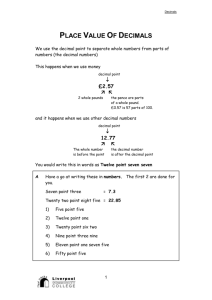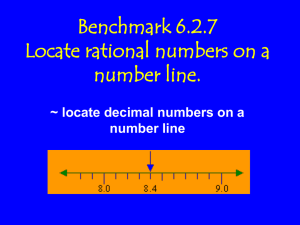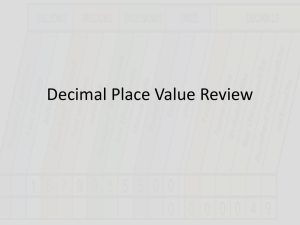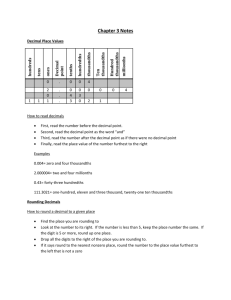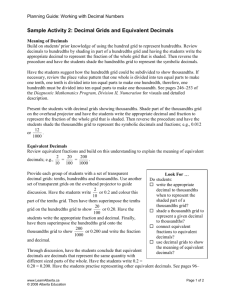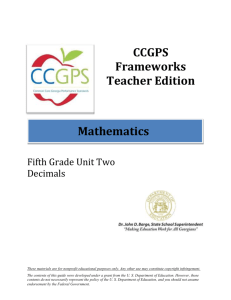Compare Decimals
advertisement
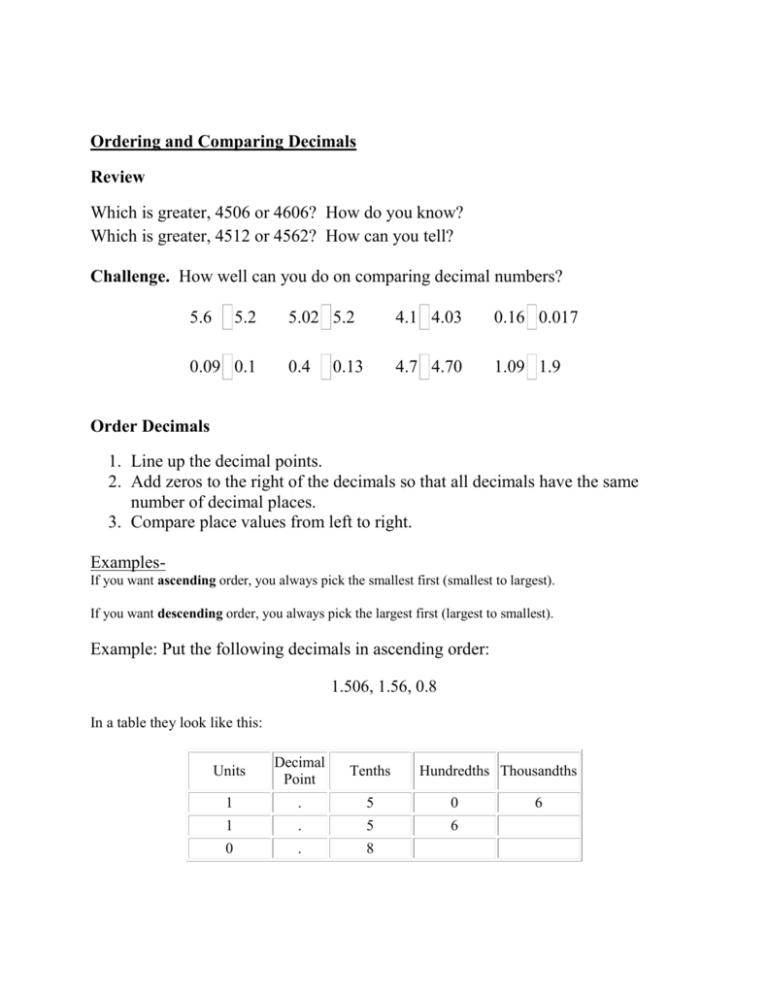
Ordering and Comparing Decimals Review Which is greater, 4506 or 4606? How do you know? Which is greater, 4512 or 4562? How can you tell? Challenge. How well can you do on comparing decimal numbers? 5.6 5.2 0.09 0.1 5.02 5.2 4.1 4.03 0.16 0.017 0.4 4.7 4.70 1.09 1.9 0.13 Order Decimals 1. Line up the decimal points. 2. Add zeros to the right of the decimals so that all decimals have the same number of decimal places. 3. Compare place values from left to right. ExamplesIf you want ascending order, you always pick the smallest first (smallest to largest). If you want descending order, you always pick the largest first (largest to smallest). Example: Put the following decimals in ascending order: 1.506, 1.56, 0.8 In a table they look like this: Units Decimal Point Tenths 1 . 5 0 1 . 5 6 0 . 8 Hundredths Thousandths 6 Fill in the empty squares with zeros: Units Decimal Point Tenths 1 . 5 0 6 1 . 5 6 0 0 . 8 0 0 Hundredths Thousandths Compare using the first column (Units or whole number-ones place value) Two of them are "1"s and the other is a "0". Ascending order needs smallest first, and so "0" is the winner: Answer so far: 0.8 Now we can remove 0.8 from the list: Units Decimal Point Tenths 1 . 5 0 6 1 . 5 6 0 - . - - - Hundredths Thousandths Then continue. Compare Decimals 1. Line up the decimal points 2. Starting at the left, find the first place the digits differ 3. Compare the digits (Use >,<, or =) ExamplesExample 1: Polygon Pizza Place caters children's parties with squareshaped pizza. Each pizza is exactly the same size and is divided into equal parts called slices. At Sam's party, each child had 2 out of 10 slices from a single pizza. At Elena's party, each child had 15 out of 100 slices from a single pizza. At which party did each child have more pizza? Analysis: We can write a fraction to represent each party: Party Fraction Sam's Elena's Using our knowledge of decimals, we get: Party Answer: Fraction Decimal Sam's 0.2X Elena's 0.15 Each child got more pizza at Sam's Party. In Example 1, we compared two decimal numbers and found that 0.2 is greater than 0.15. Some students would argue that 0.15 is a longer decimal with more digits, and is therefore greater than 0.2. However, if we think about money, we know that 20 cents is greater than 15 cents. Thus, our answer in Example 1 is correct. Decimal numbers are compared in the same way as other numbers: by comparing the different place values from left to right. We use the symbols <, > and = to compare decimals as shown below. Comparison Meaning Example 1: 0.2 > 0.15 0.2 is greater than 0.15 0.15 < 0.2 0.15 is less than 0.2 0.2 = 0.2 0.2 is equal to 0.2 0.15 = 0.15 0.15 is equal to 0.15 When comparing two decimals, it is helpful to write one below the other. This is shown in the next example.



